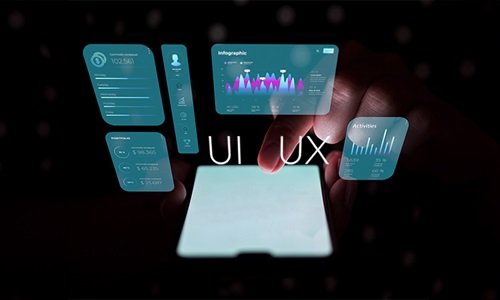Emerging Trends in UX and Interface Design
User experience and interface design are constantly evolving, influenced by technological advancements and changing user expectations. As digital interactions become more integrated into daily life, designers are finding new ways to enhance usability, accessibility, and engagement. The latest trends in UX and interface design are shaping how users interact with technology, making experiences more seamless, personalized, and immersive. From artificial intelligence-driven interfaces to voice interactions and minimalist design, these trends are redefining digital experiences and setting new standards for the industry.
One of the most significant trends in UX design is personalization powered by artificial intelligence. AI is enabling interfaces to adapt to individual users based on their behavior, preferences, and past interactions. Personalized experiences create more meaningful engagements, whether through dynamic content recommendations, customized navigation, or predictive search results. E-commerce platforms, streaming services, and news applications are leveraging AI to tailor content for each user, increasing satisfaction and retention. Machine learning algorithms analyze user data in real time, allowing interfaces to anticipate needs and provide relevant suggestions. This level of personalization makes digital experiences feel more intuitive and efficient.

Voice user interfaces are also transforming the way users interact with technology. The rise of smart speakers and virtual assistants has made voice interactions more common, leading designers to rethink traditional navigation patterns. Instead of relying solely on visual interfaces, many applications now integrate voice commands to enhance accessibility and convenience. Voice UX requires a different approach, focusing on natural language processing and conversational design to ensure smooth interactions. As voice recognition technology continues to improve, more devices and applications will incorporate voice-based interactions, reducing reliance on screens and keyboards.
Minimalist and functional design is another major trend shaping UX and interface design. Users now prefer clean, simple interfaces that prioritize clarity and ease of use. Cluttered designs with excessive elements can overwhelm users, leading to frustration and decreased engagement. Designers are focusing on reducing visual noise, using ample white space, and emphasizing essential content. Flat design, subtle animations, and soft color palettes contribute to a more visually appealing and user-friendly experience. This trend aligns with the growing emphasis on usability, ensuring that interfaces remain accessible and efficient for a wide range of users.
Dark mode and adaptive UI have gained popularity as users seek more comfortable viewing experiences. Dark mode reduces eye strain in low-light environments and conserves battery life on mobile devices. Many applications and operating systems now offer dark mode as an option, allowing users to choose their preferred display settings. Adaptive UI takes this concept further by adjusting the interface based on external conditions such as lighting, device type, or user preferences. This trend enhances accessibility and usability by ensuring that interfaces remain readable and visually appealing in different environments.
Microinteractions are becoming an essential element in UX design, improving engagement and guiding users through digital experiences. These small, subtle animations provide feedback, indicate system status, or encourage specific actions. Whether it’s a button changing color upon interaction or a notification with a smooth transition, microinteractions enhance usability without overwhelming the user. They create a more interactive experience, making digital interactions feel more natural and intuitive. Designers are incorporating microinteractions strategically to improve user flow and reinforce brand identity.
Immersive experiences driven by augmented reality and virtual reality are also shaping the future of UX design. AR and VR technologies are no longer limited to gaming and entertainment but are being integrated into retail, education, and healthcare applications. AR enables users to interact with digital content in real-world environments, enhancing shopping experiences, navigation, and learning. Virtual reality provides fully immersive environments for training, collaboration, and simulation. As these technologies become more accessible, UX designers are exploring new ways to create engaging and interactive experiences that blur the line between the digital and physical worlds.
Accessibility and inclusive design are gaining more attention as companies prioritize creating experiences that cater to all users, including those with disabilities. UX designers are incorporating features such as voice navigation, high-contrast themes, and keyboard-friendly interfaces to ensure accessibility compliance. AI-powered tools are also helping to improve accessibility by automatically generating captions, descriptions, and translations for content. Inclusive design benefits a wider audience, making digital experiences more equitable and user-friendly for everyone.